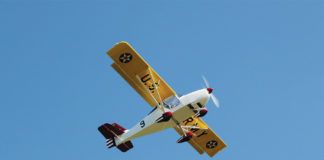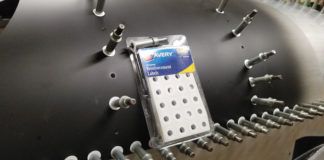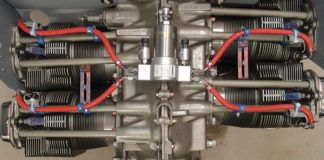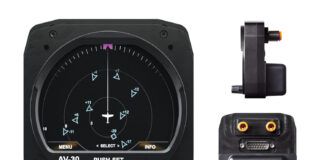Airshows and fly-ins–I love ’em. People who love aircraft, live, breathe, eat, sleep and dream about aircraft, indoctrinate their children, even their helpless pets into the world of aviation, all gathering together to honor, ogle at, and argue about the performance of all man-made objects that fly. It’s fun.
If you are like me, a member of the press with a little notoriety and known to have aircraft builder tendencies, you’re going to get a lot of questions. Really. People want to know.
They ask, why are you building a Van’s RV-10? Why not a Lancair, a Velocity or even (yes, I really did get this one) a gyroplane (after all, I do hold that rating on my certificate). They want to know how my husband and I are doing in the building process (not just how long it is taking), and they want to know where we are building. More sophisticated questioners always circle back to, “Why do it that way?”
Sure, I like the questions, and as long as they aren’t inquisitions I’m happy to answer. We chose the RV-10 after two years of researching kits that might help us carry the same or similar loads as our Cessna 182, but go 15 knots faster. We looked at the composite aircraft very carefully, and shied away for a couple of reasons. For one, my husband abhors working with any form of fiberglass or products that require layups and lots of resins, then curing and sanding and repeating. Our shop is set up pretty well for metalworking, and that naturally drew us more toward the Van’s products. We thought that the 260-hp RV-10 would be a good hauler (nothing can compare to the Cessna 182 baggage area, but the useful load was close). And we had a Marine test-pilot friend who had flown the first RV-10 and told us that it was a sweet-handling machine that would make a solid instrument flying platform. So, mostly-metal airplane with adequate useful load and docile flying characteristics from a company that has been in the kit business for a long time, with a solid track record (did I tell you the last kit we built the company went out of business?), and we were sold on the RV-10.
Nearly four years later, and almost done, I can look back and safely say that it was a good decision. We were never waiting too long on parts, and there were always ample vendors from which to obtain them. Pricing was always competitive, and sometimes you could fabricate what you needed or fabricate something even better than what the factory suggested. As the kit’s popularity grew, so did the mods, of which we’ve availed ourselves. Our airplane has upgraded door latch systems and a Safety-Trim elevator trim system, as well as electric rudder trim enhancements. It also has a Sam James Holy Cowl and plenum system, as well as Sam James wheelpants. So there’s more than just a custom panel and paint job to make this baby really our own.
And that’s the beauty of a kit that you actually build yourself. You can make these changes as you go along and discover what you think are better ways to build your craft. It’s the “education” side of the amateur-built rule explanation. It’s not the only reason we build, but it’s a good reason to consider undertaking a project of this scope. We’re 2300 hours into ours, and are about to go fly. We’re feeling pretty smart.




